Iranian cuisine is deeply rooted in a heritage that spans thousands of years. It is a culinary landscape renowned for its diverse ingredients, intricate flavors, and captivating presentation. While each region within Iran has its own culinary identity, common threads bind them together – the use of fresh herbs, a delicate balance of sweet and sour, and the balance of spices.
A profound understanding of flavor dynamics and textural harmony lies at the heart of Persian cooking. Rice and bread, revered in Iranian culture, provide a canvas upon which a symphony of meats, vegetables, and spices dance.
In our exploration of Persian cuisine, we introduce five traditional Iranian dishes that encapsulate the essence of this gastronomic tradition. From Chelow Kabab to Ash Reshteh, each dish offers a glimpse into the soul of Persian cooking.
Visit Our Iran also provides comprehensive information about Iran’s diverse culinary landscape and top-notch restaurants during your visit to the country.
Chelow Kabab
Chelow kabab is one of the most famous Iranian foods, with its straightforward yet delicious combination. Consisting of tender, marinated meats grilled to perfection and served alongside steamed rice (chelow), this dish has rightfully earned its place as the national cuisine of Iran, believed to have originated during the Qajar dynasty.
Accompanying the succulent kebabs are a medley of traditional garnishes, including butter, sumac powder, basil, onions, and grilled tomatoes, each adding layers of taste and texture to the meal. It completes the authentic dining experience. Chelow kabab is often enjoyed with a refreshing glass of doogh, a tangy yogurt-based beverage that perfectly complements the unique flavors of the dish.
The preparation and serving of chelow kabab follow a time-honored tradition: the rice is cooked first, followed swiftly by the sizzling skewers of kebab and a piece of flatbread. As the skewer is gently removed, the tantalizing aroma of grilled meat mingles with the fragrant steam rising from the rice.
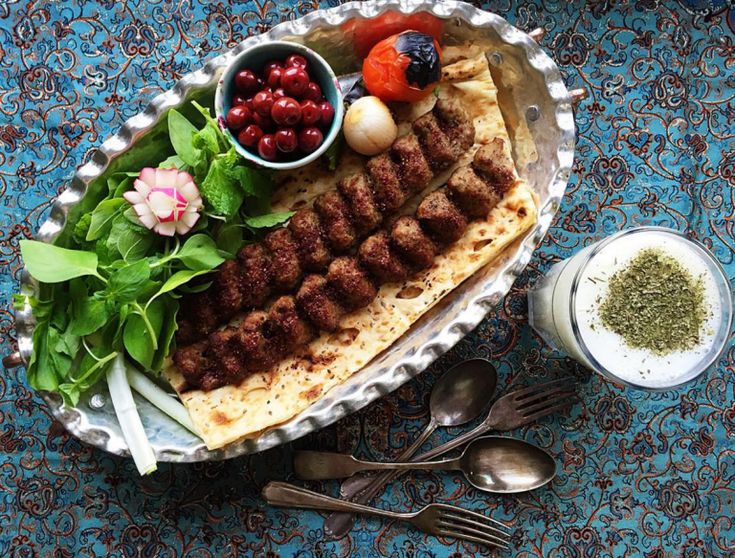
Various chelow kababs, from barg, marinated and barbecued to perfection, to the flavorful koobideh, a minced meat kebab infused with aromatic spices and herbs. Each variant offers a unique experience, yet all share the common thread of simplicity and sophistication that defines Persian cuisine. Whether enjoyed in a bustling bazaar or a cozy family gathering, chelow kabab represents the warmth and simplicity of Iranian food.
Persian Walnut Pomegranate Stew
Fesenjan, one of the most beloved Persian stews, combines rich, complex flavors. It is a mixture of juicy chicken with ground walnuts and pomegranate and a good depiction of the culinary artistry of Iran. The earthy aroma of walnuts blends harmoniously with the sweetness of pomegranate molasses, while warm spices like turmeric and cinnamon add depth to every bite.
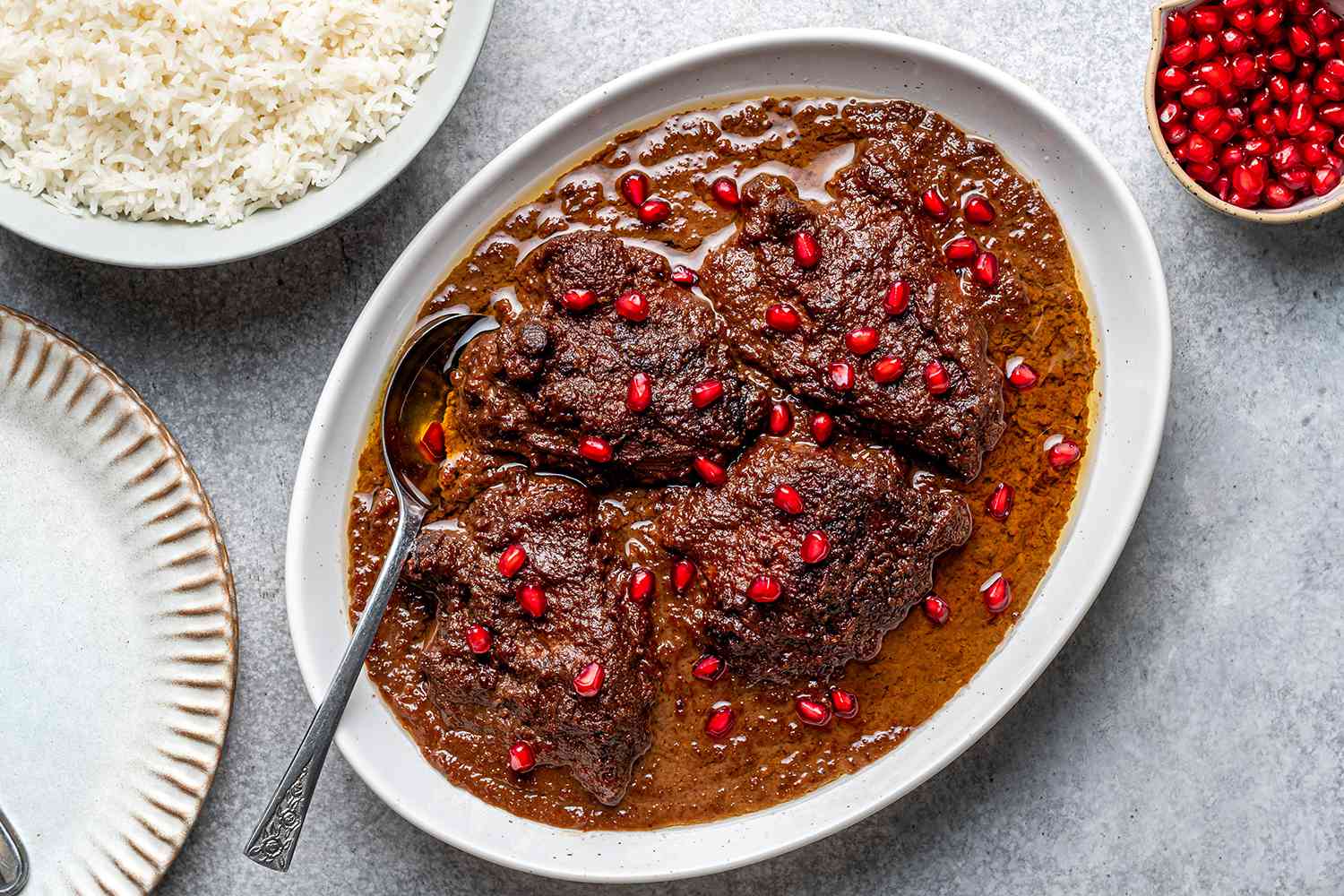
Originating from the lush landscapes of Northern Iran, Fesenjan has deep cultural roots dating back to ancient times. Traditionally enjoyed during the winter solstice celebrations, this dish symbolizes the season’s bounty, with pomegranates representing immortality and fertility. Its preparation is a labor of love, requiring patience and attention to detail to reach the perfect balance of flavors.
Serving Fesenjan is usually cooked for special occasions and gatherings with loved ones. Whether ladled over fluffy basmati rice or accompanied by crispy tahdig, every spoonful of this delectable stew is a journey through Persian culinary heritage. With its unique blend flavors, Fesenjan offers a truly unforgettable culinary experience.
Barberry Rice with Chicken
Zereshk Polo, a traditional Persian dish, delights the senses with every bite. It includes vibrant hues of barberries and the fragrant essence of saffron and shows the rich culinary heritage of Iran. The mixture of barberries and saffron rice creates a harmonious balance that is simply irresistible.
At the heart of Zereshk Polo is saffron, a spice known for its unique flavor and vibrant color. It adds a touch of luxury to every dish it graces. Its sweet, floral notes transform the chicken and rice into a feast of royalty.
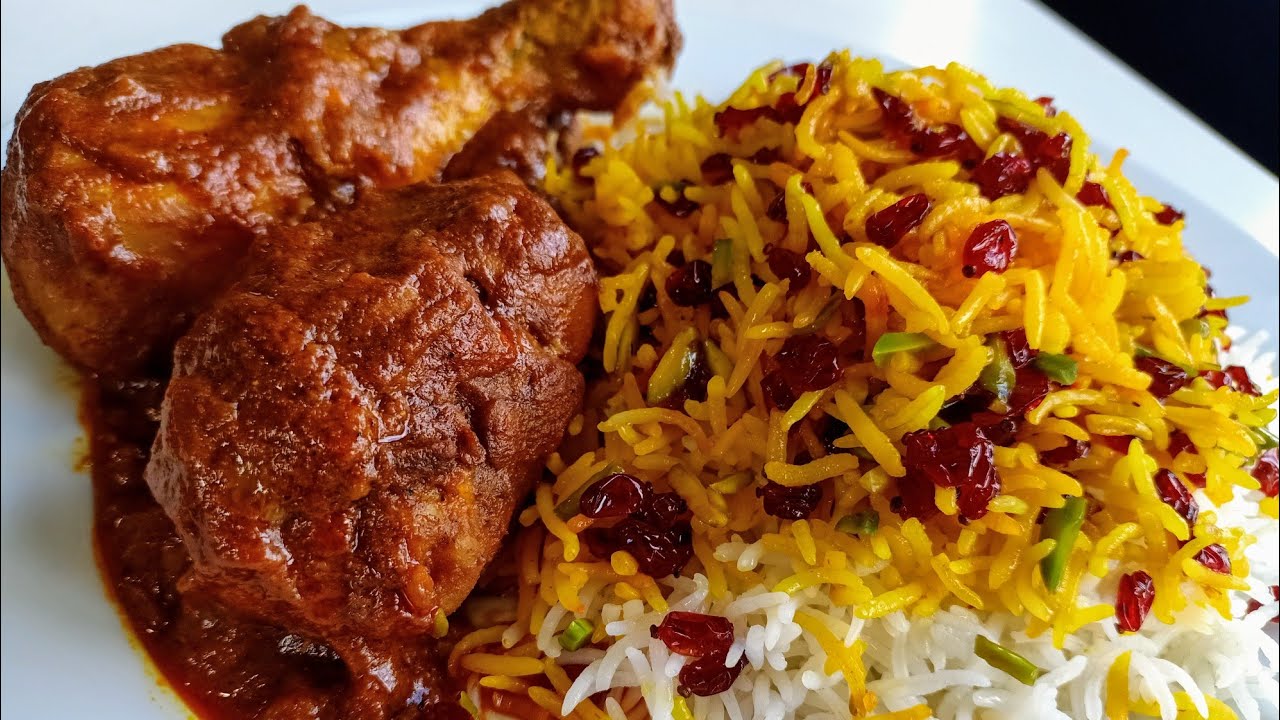
Serving Zereshk Polo celebrates family, tradition, and the joys of homemade cooking. This dish will captivate tourists with its exquisite flavors and aromatic allure. You can also gather your loved ones, prepare your ingredients, and start a culinary journey to Iran with Zereshk Polo at your home. With each spoonful, you’ll discover a world of spices, homemade goodness, and the boundless warmth of Persian hospitality.
Ash Reshteh
Ash Reshteh is more than just a dish – it’s a tradition, especially during Norooz, the Persian New Year celebrations. This hearty soup, brimming with legumes, fresh herbs, and reshteh (Persian noodles), is like a warm embrace on a chilly day. Unlike traditional soups, Ash Reshteh has a thick, chili-like texture, making it a comforting and satisfying meal.
What sets Ash Reshteh apart is its unique blend of flavors, highlighted by two essential ingredients: reshteh and kashk (fermented whey). While reshteh lends a distinct chewiness to the soup, kashk adds a tangy richness that elevates the dish to new heights. With a medley of fresh herbs and greens, Ash Reshteh delights the palate and warms the soul.
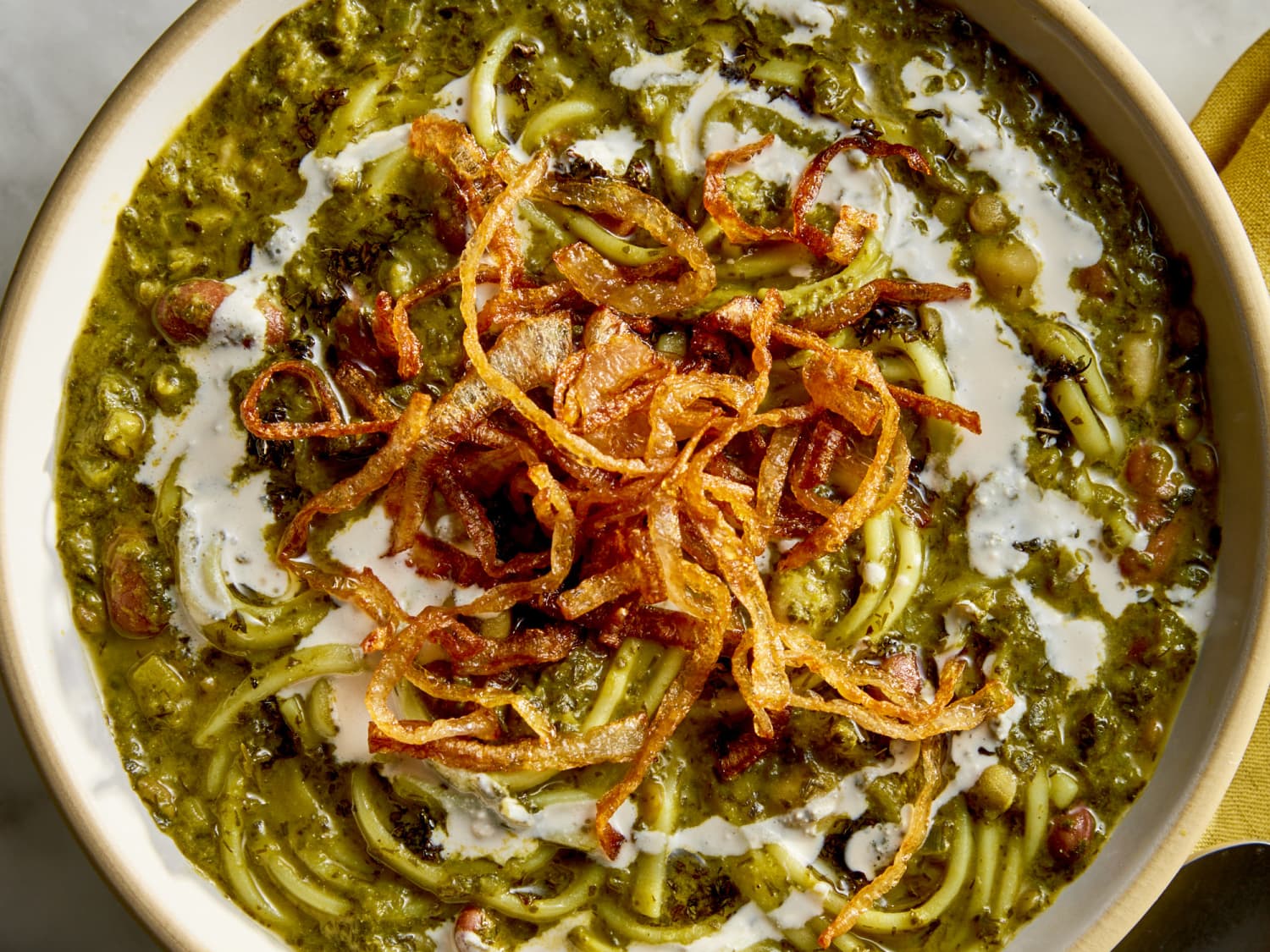
As part of Norooz festivities, Ash Reshteh holds a special place in Persian culture. Whether enjoyed during Chaharshanbeh Soori, the Festival of Fire, or Sizdah Bedar, the final day of Norooz celebrations, this soup brings families and friends together, symbolizing the spirit of renewal and hope for the year ahead. So, when you visit Iran, don’t forget to gather around and enjoy the Persian vegan and heartwarming Ash Reshteh.
Persian Herb Stew
Ghormeh Sabzi, often hailed as Iran’s national dish, is a culinary masterpiece. At its core lies a spectacular blend of sautéed herbs, including parsley, coriander, and leeks, infused with the distinctive flavor of dried fenugreek leaves. This fragrant herb mixture forms the foundation of the stew, which is then enriched with tender pieces of lamb or beef, kidney beans, and the unique tang of Omani limes.
The preparation of Ghormeh Sabzi requires meticulous attention to detail. Each ingredient is finely chopped and sautéed until dark and aromatic, a crucial step that imparts depth and complexity to the stew. The result is incredibly delicious as the flavors meld together over hours of simmering.
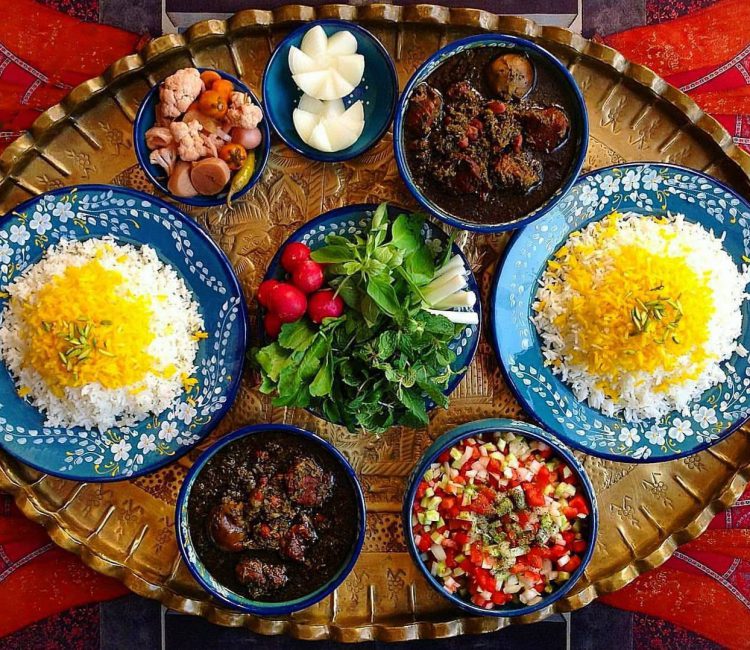
Served alongside Persian rice and mast-o khiar, Ghormeh Sabzi is more than just a meal – it’s a cultural experience. Whether enjoyed during festive occasions or as a comforting family dinner, this iconic dish symbolizes the vibrant spirit of Iranian cuisine and the cherished traditions that accompany it. So, immerse yourself in the flavors of Ghormeh Sabzi and discover why it has captured the hearts of food lovers worldwide.
Wrapping Up
In conclusion, trying Iranian food is not just about tasting new flavors; it’s about experiencing a culinary adventure that will broaden your gastronomic horizons. Iranian cuisine is still waiting to be discovered, from the aromatic spices to the rich stews and delicate sweets. So, whether you’re a seasoned foodie or someone looking to explore new culinary territories, don’t miss the opportunity to discover Iran’s unique and delicious dishes. You will enjoy this unforgettable experience!
Iranian food stands out as a gem in the vibrant mosaic of global cuisine. So, if you’re a traveler passionate about culinary exploration, include Iranian cuisine on your gastronomic bucket list. Each bite will glimpse Iran’s rich cultural heritage and traditions. So, dare to venture beyond the familiar and let the exotic flavors of Iranian cuisine transport you to a world of culinary bliss. Don’t forget to drop your questions about the services we offer while you are visiting Iran.
